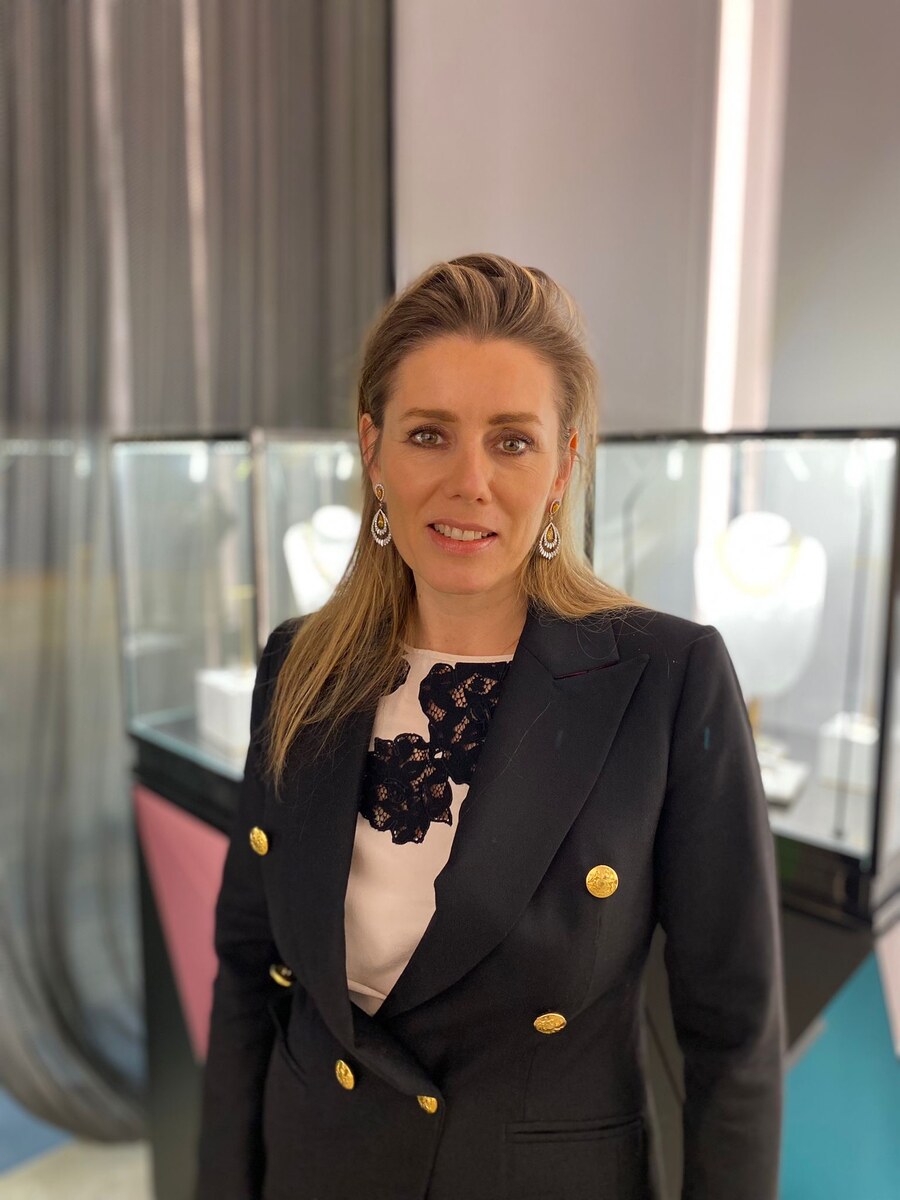RIYADH: In the past decade, Saudi Arabia’s diamond market has transformed from a niche luxury segment into a shining dynamic force within the global industry.
Driven by a blend of deep-rooted cultural traditions and the Kingdom’s burgeoning economic affluence, the demand for these jewelry items has surged.
This growth reflects not only the country’s rich heritage but also a broader shift toward luxury experiences, underscoring a new era of opulence in one of the world’s most affluent markets.
“The rise in the demand for diamonds, particularly within the luxury sector, is driven by growing affluence and the desire for high-end experiences,” Anne Larsen, an expert gemologist and high jewelry adviser told Arab News.
She added: “The surge for luxury experiences and products within the luxury sector has been the biggest factor to this change, especially within the last few years.”

Anne Larsen, an expert gemologist and high jewelry adviser, addressed the factors behind the surge of diamond market in Saudi Arabia. (Supplied)
This trend has accelerated as more consumers seek unique items as a form of self-expression.
This surge in demand is mirrored by a shift in consumer behavior, with young, independent women entering the market. They are increasingly opting for mid-range jewelry, focusing on quality and design rather than large, ostentatious pieces.
Saudi Arabia has made significant strides as a key exporter in the global diamond market. In 2022, the Kingdom exported $47.2 million in diamonds, placing it as the 36th largest diamond exporter globally, according to a report by the Observatory of Economic Complexity.
The main destinations for Saudi diamonds were Singapore, the UK, and Hong Kong, among others.
The market has grown swiftly, and with ongoing developments, Saudi Arabia could potentially increase its influence within the global diamond trade.
Diamonds as an alternative investment
Diamonds have risen as a unique alternative investment, and have outperformed traditional assets such as the S&P 500.
With prices demonstrating long-term stability and impressive gains, they have become attractive to investors seeking diversification.
According to Larsen, however, in the last year colorless diamond prices fell by 20 percent, thanks to a combination of the lab grown diamond market, geopolitical tensions and change in supply.”
“I believe there are more opportunities in the color diamond category. This is mainly due to scarcity and a growing demand among consumers,” the expert said, adding: “Diamonds have always held some value and been a ‘hot’ commodity, similar to gold.”
As the diamond market matures in Saudi Arabia, many investors have shifted their focus away from gold due to favorable price dynamics.
Market dynamics and economic impact
Jewelry shows across the Kingdom have become essential platforms to showcase Saudi Arabia’s influence in the diamond industry.
Although the Kingdom does not have its own diamond mines, its strategic position in the global supply chain is underscored by its strong export performance and growing consumer base.
“As women are the primary buyers of gemstones in the Kingdom, the design of women’s accessories is prioritized, followed by men’s rings,” Nawwaf Al-Luhaibi, a specialist in the gemstone industry told Arab News.
Al-Luhaibi said that dealing in gemstones is becoming a prosperous business in Saudi Arabia due to the availability and quality of gems.
Many Saudis are increasingly entering the industry by creating innovative and distinctive masterpieces.
“There is a great demand from those interested, and amateurs in the field of gemstones are increasing significantly,” he said.
According to a report by the Observatory of Economic Complexity, the Kingdom’s diamond imports reached $33.3 million in 2022, making it the 42nd largest importer globally.
A deeper analysis of the future
In the past three years, a new consumer segment has emerged in the market which as an appetite for mid-range jewelry that features high-quality diamonds and exceptional craftsmanship.
“The independent young adult woman. There is a big focus on this type of client not only in Saudi Arabia,” Larsen said.
She added: “We see the change is also in America where the younger professionals are very much looking for experiences within the luxury market, but experiences that will provide them with good quality, eco-friendly solutions and often from a well-known brand.”
The demand for large diamond pieces, traditionally associated with wedding jewelry, has decreased.
“Today’s modern women put more emphasis on the quality and design to express their personality rather than show off wealth as we have known it up until now,” she said.
Larsen continued: “Due to this change the diamond market is shifting slightly toward quality over quantity, applying these requests from our consumers.”
While gold prices have surged, both gold and diamonds remain strong market categories, with gold currently showing perhaps even greater strength.
With continued investment in luxury goods and a growing appetite for unique experiences, Saudi Arabia’s diamond industry is poised for continued growth.
As Saudi Arabia continues its Vision 2030 plan, fostering diversification and sustainable growth, the diamond industry is set to play an increasingly significant role in the broader economic landscape.
By positioning diamonds as both luxury goods and viable investment assets, the Kingdom is set to further solidify its standing in the global luxury market.
According to a report by TechSci Research, an Indian management consultancy firm, Saudi Arabia’s gold and diamond jewelry market – valued at $3.43 billion in 2022 – is projected to experience strong growth, with an anticipated compound annual growth rate of 14.07 percent through 2028.
“Saudi Arabia is renowned for its opulent and intricate gold and diamond jewelry, which reflects the country’s rich cultural heritage and its status as a global hub for the gem and jewelry industry,” the report said.



























